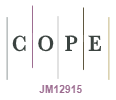Codesign of the Population Health Information Management System to measure reach and practice change of childhood obesity programs
Amanda Green A * , Christine Innes-Hughes A , Chris Rissel A B , Jo Mitchell C , Andrew Milat B D , Mandy Williams E , Lina Persson D , Sarah Thackway D F , Nicola Lewis C and John Wiggers G H
+ Author Affiliations
- Author Affiliations
A
B
C
D
E
F
G
H
* Correspondence to: Amanda.Green@health.nsw.gov.au
Public Health Research and Practice 28, e2831822 https://doi.org/10.17061/phrp2831822
Published: 27 September 2018


